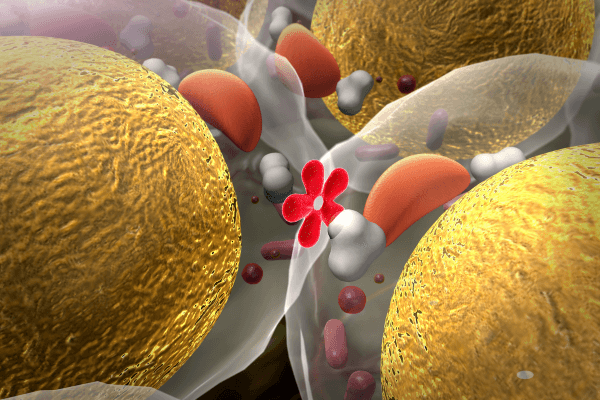Understanding muscles
Muscles are soft tissues which help with locomotion of the body. There are more than 650 muscles in the body. They can be of 3 types – Skeletal muscles, smooth muscles and cardiac muscles.
- Skeletal muscles – Skeletal muscles are voluntary muscles attached to bones and are responsible for the whole body movement. These muscles are controlled by the central nervous system (CNS).
- Smooth muscles – Smooth muscles are involuntary muscles present in hollow organs such as blood vessels, GI tract, uterus etc.
- Cardiac muscles – The cardiac muscle is a strong, involuntary muscle which is present in the heart walls. It is controlled by the autonomic nervous system.
Role of muscles in the body
The function of muscle mass is not limited to exercise performance and activities of daily life (ADL). They act as a reservoir for amino acids and help maintain protein synthesis in the tissues and organs in the case amino acids are not absorbed in the gut (due to poor dietary protein intake or in born errors of protein metabolism).
1. Muscles are a key component in the central metabolism of proteins – The skin, heart, brain and liver require proteins for survival. In a post absorptive state, the tissues and organs require a continuous supply of amino acids for function and metabolism. However, under the situation that there is a scarcity of dietary proteins, the muscle may be broken down to supply amino acids.
2. Muscles and critical illness – In a state of stress such as sepsis, cancer, infection, burns etc. the need for proteins becomes higher to support recovery. In most cases, muscle protein is broken down to meet the higher demand. However, good muscle mass is important to help enhance recovery simultaneously.
3. Obesity – Obesity is caused due to an imbalance in the energy intake and energy expended. Total energy expenditure (TEE) = Resting energy expenditure (REE) + thermic effect of food + activity associated energy expenditure. Usually REE is the major contributor of energy expenditure which is influenced by the metabolic requirement of splanchnic tissues, brain and skin. An individual with obesity has higher fat when compared to muscle mass. REE can be associated with muscle turnover. When an individual has more muscle the body burns more energy at rest.
4. Chronic diseases – Heart diseases and cancer are associated with loss of muscle mass, strength and cachexia. However, muscle mass is an important determinant of survival rate. It can also lead to sarcopenia.
5. Insulin resistance and Diabetes – The stage where the muscles become insulin resistant can be the precursor stage of development of Type 2 Diabetes. In this stage, the insulin secretion is increased to ensure the muscles are able to remove the plasma glucose and ensure normal glucose concentration.
A higher body fat concentration is associated with higher free fatty acids (FFA) in the blood. This FFA may restrict glucose uptake by muscles. There is also an increased triacylglycerol (TAG) concentration in the muscles. TAG concentration may be high in individuals with obesity and muscles become incapable of fatty acid oxidation.
6. Osteoporosis – A study revealed that higher the skeletal muscle mass, better the bone mineral content and bone mineral density. Poor skeletal muscle mass is associated with higher risk of falls due to poor muscle strength.
Tips to sustain muscle mass with ageing
There are 3 methods to improve or sustain muscle mass as you age:
- Hormonal therapy – Hormonal therapy can be given to increase concentration of muscle mass, to replace a hormone deficiency or block the hormone action.
For ex. Testosterone replacement in hypogonadal elderly men increased muscle mass and strength.
However, it is important to note that hormonal therapy may pose unidentified risks in the long term along with side effects. - Exercise – Exercise improves muscle contraction, muscle metabolism and insulin sensitivity. It may also be effective in preventing muscle loss while restoring lost muscle. Choosing the best exercise regimen along with a good nutritious diet is important considering individual needs and differences.
- Nutrition – Muscle protein is directly proportional to the protein in the diet. Amino acids obtained by the breakdown of proteins, promotes muscle protein synthesis.
The protein requirement can vary greatly by requirement.
An average healthy sedentary adult has and EAR of 0.66g/kg/day. While the World Health Organization (WHO) suggests asn average of 0.83g/kg/day. However, multiple internation organisations (such as the Academy of Nutrition and Dietetics, Dietitians of Canada, and the American College of Sports Medicine) suggest 1.2-2.0g/kg/day. Thedifferences in protein requirement can be confusing for some, yet a diet focusing on high biological value proteins like eggs, poultry, fish, meat, whey protein or plantbased sources like pulses, legumes etc. can be helpful. Ensure all the 20 Essential Amino Acids (EAA) are met via the diet everyday.
The understanding and the importance of muscle mass is increasing world wide. Speak to your doctor or physiotherapist to get a customised exercise routine. Practise strength training atleast 3 times a week. Last but not the least consume a balanced diet rich in proteins to support muscle mass.
Mayuri,
Dietetic Researcher, Simplyweight













